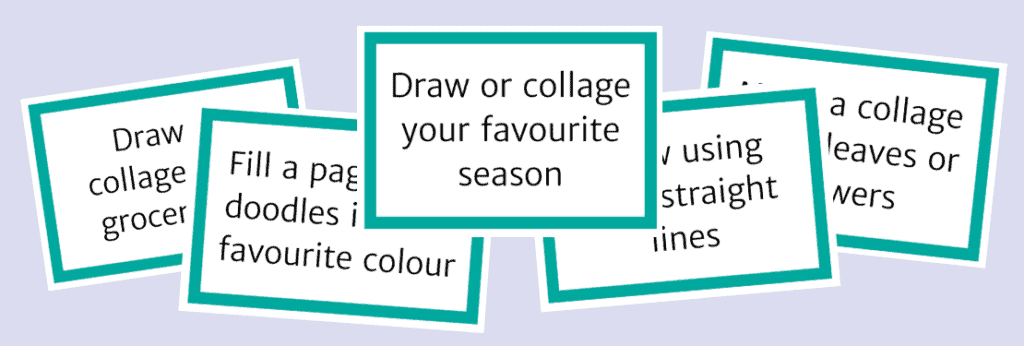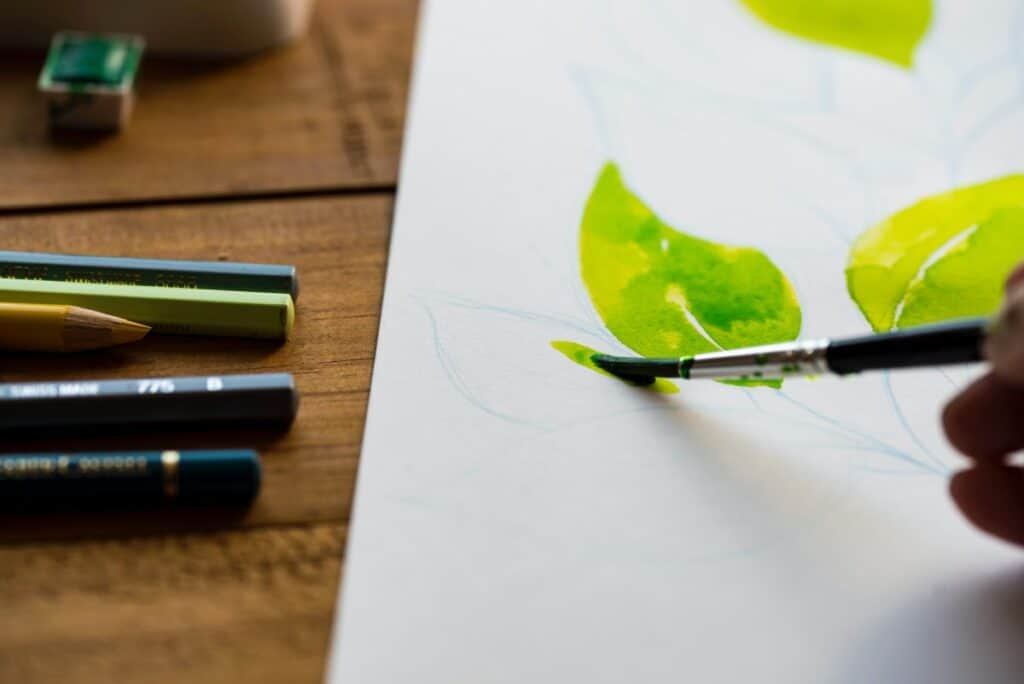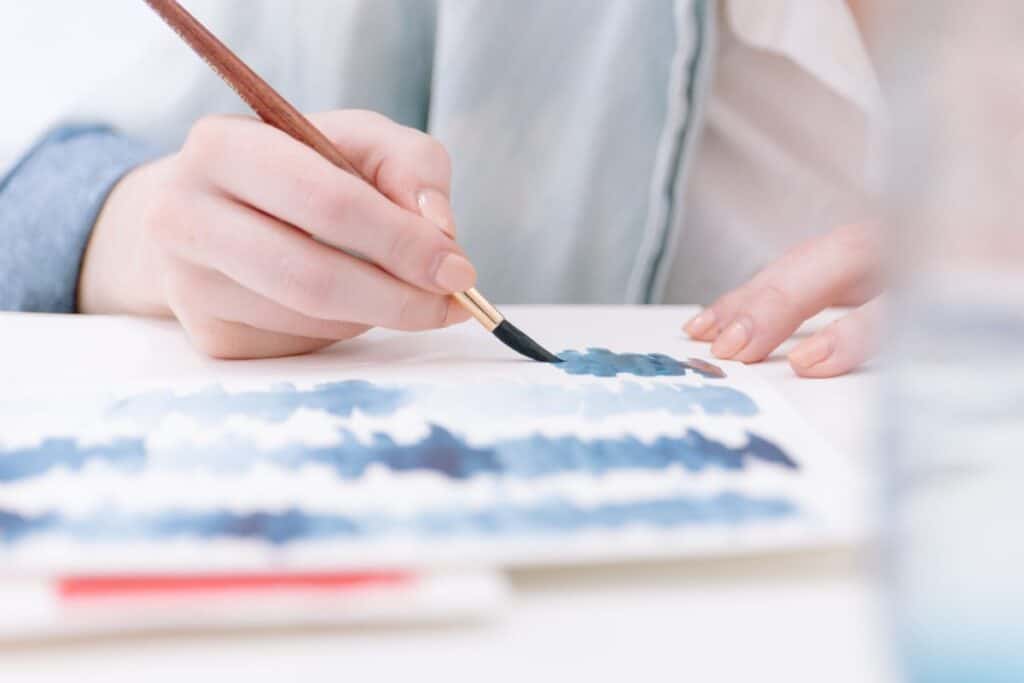When you spend time being creative, you’ll make your fair share of mistakes. In this blog post I look at how to learn and improve from creative mistakes and how you can eventually start to embrace them too.
I don’t know about you, but I’m the kind of person who likes to work things out through trial and error. It can be one of the best ways to teach yourself something.
But it can also be one of the most frustrating. This is because when things go wrong, you have to deal with the mistakes, rather than just avoiding them in the first place.
The important thing to remember is that when you can figure out for yourself what went wrong, and more importantly why it went wrong, you can learn a lot.
Sign up for my monthly emails of creative tips, tutorials and DIYs and get 31 free creative prompts!

You can unsubscribe at any time
Don’t beat yourself up when you make creative mistakes!
When something doesn’t turn out quite the way you hoped it would, you can react in one of two ways.
The natural reaction is negative. You feel like you can’t do whatever it is you were doing, that you’ll never be any good at it, you don’t know why you bother…
Frustration, anger, disappointment.
If you’re a perfectionist, these feelings can become even worse. That was my main issue for a long time.

Combatting perfectionism
When you let it take over, perfectionism is crippling. Rather than making you better at whatever you’re doing, it actually does the opposite.
It can stop you moving on to another painting, since you feel there might be something you could do to improve the one you’re working on.
And so you keep adding and taking away and tweaking. And guess what? It’s never done. Or at least your inner perfectionist is never convinced it’s finished. And eventually you’ll get to the stage where you’ve overworked the painting.
Perfectionism can stop you creating altogether, since you’re convinced you’ll never make anything perfect. (But what is perfect anyway?)
And it can cause you to abandon a project when you’ve made a mistake — because if you’ve made a mistake, what you’ve created isn’t perfect.
I’ve had all these issues. I used to be a perfectionist, and I still suffer from perfectionist tendencies every so often.
But on the whole, I can now create in a much more relaxed way than I used to. And that’s SO freeing.
Let me tell you this: it doesn’t have to be perfect every time. And it won’t be.
Read the line above again.
Everyone makes mistakes, and you’re no different. The number or frequency of your creative mistakes doesn’t make you better or worse than anyone else.
So are you ready to embrace your mistakes and use them as a learning experience?
What can you learn from your creative mistakes?
Firstly, don’t just look at what you’ve created and write it off. Instead, really look at it and figure out what it is that you don’t like about it.
Can you work out what feels wrong? In some cases it might be obvious. Maybe you dropped your paintbrush and it splattered paint everywhere.
Sometimes you might just have a feeling that what you’ve created isn’t quite right, but you can’t put your finger on why or how. This is especially likely if the project is quite subjective and could be interpreted many ways. Painting and drawing are both examples of this.
I get this a lot when I’m drawing. I know what I’ve attempted to draw, and I can feel that it’s not quite right. But sometimes it takes a bit of figuring out to work out exactly how it isn’t right.
My wonky cow drawing
A great example of this is a drawing I did of a cow’s head. I sketched out the outline and then stepped back so I could get a better overall picture of what I had drawn.
But something just wasn’t quite right. It had all the right parts, like ears, nostrils, eyes, a mouth, etc. They all seemed to be in the correct places, too. So why didn’t it feel right?
In the end, I broke it down as simply as I could, by looking at the relationships between each part of the face.
I also looked at where the lines connected in my drawing compared to the original photo, and roughly compared the angles.
By doing this I realised I’d inadvertently bent my cow’s nose slightly and skewed the perspective by making the nostrils too far apart.
If I’d been disheartened by my bizarre-looking cow, I might have just crumpled it up and thrown it in the recycling, and never thought about it again. I would probably have avoided drawing cows again in the future, too.
Now, I feel more confident that I could draw a cow in future and not have it look like I’m trying to embrace my inner Picasso 😅
And I know that even if I do draw another slightly wonky-looking cow, I could identify where I strayed from the reference photo and know how to fix it.

Reinterpret what you’ve created
So you’ve set out to create something, and it hasn’t turned out quite how you’d hoped it would. You’ve acknowledged that without beating yourself up, and you’ve gone on to look at what you can do differently next time.
But what about if what you’ve created has strayed so far away from what you had intended that it has become something different?
Well, as much as this may seem like a disaster at worst or frustrating at best, this isn’t really a problem either. (Although I know this is easier said than done if you’re creating something for money, to a brief, or on a deadline.)
Rather than worrying about how it’s turned out nothing like it’s supposed to be, can you reinterpret what you’ve created?
Think like a child
To do this, you may need to stop thinking literally. I was drawing with my 5-year-old niece recently, and she asked me to draw a pig so that she could copy it.
I drew a simplified pig and she set to work. When she’d finished, she sat back and held her drawing up so we could both see it.
Before I could say anything, she looked at me and grinned. “It looks like it’s on wheels!” was the first thing she said. Her interpretation of my drawing meant that, yes, her pig did look like it had wheels.
So we both had a good laugh and made up a story about a really speedy pig on wheels, who whizzed about everywhere much faster than anyone else with boring old regular feet!
It may not be as simple as this for you to reinterpret your creative mistakes, but we can learn a lot from the way kids approach creativity.
When was the last time you laughed about one of your mistakes before turning it into something else?
As soon as you stop worrying about making mistakes, you free yourself up to create with more abandon.
When you worry about getting something “wrong”, you stifle yourself and second guess what you’re doing. And that’s neither helpful nor desirable.
Embrace your mistakes!
So I want to encourage you to embrace mistakes. Mistakes help us learn and move forward. When you embrace your mistakes as a learning curve and positive experience, you also increase your confidence in your abilities.
It’s much more satisfying to figure out for yourself what went wrong, and then to see if you can put it right by yourself too.
Do you have any hints or tips for dealing with, and learning from, creative mistakes?
About Stacey

I’m Stacey and I’m a blogger, abstract artist and freelance writer. My aim is to help busy people feel inspired and get more creative with tutorials, hints and tips.
I live in Cardiff with my partner and dog, and in my free time you’ll find me hiking, reading, painting or sampling a craft beer or two.

